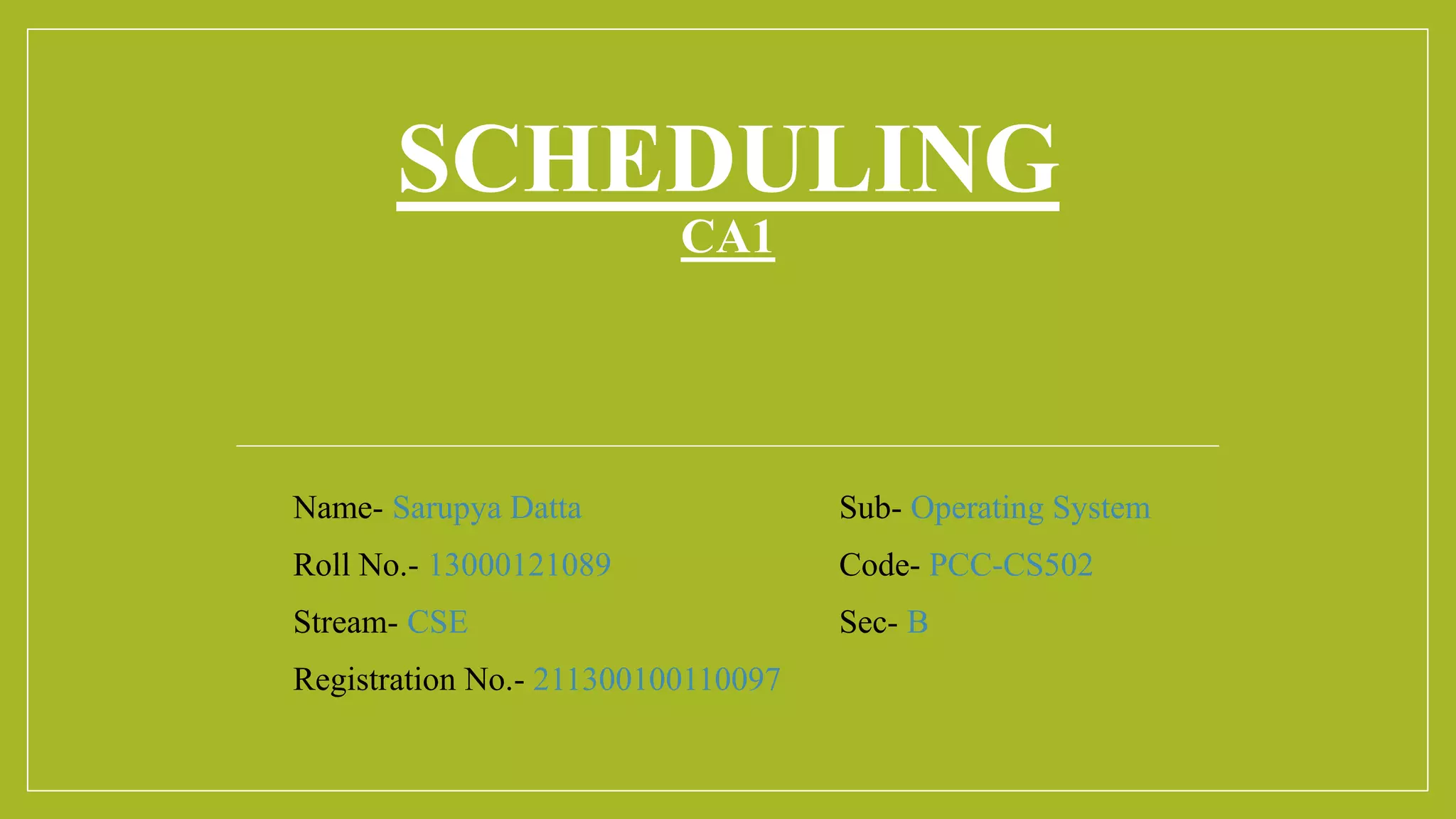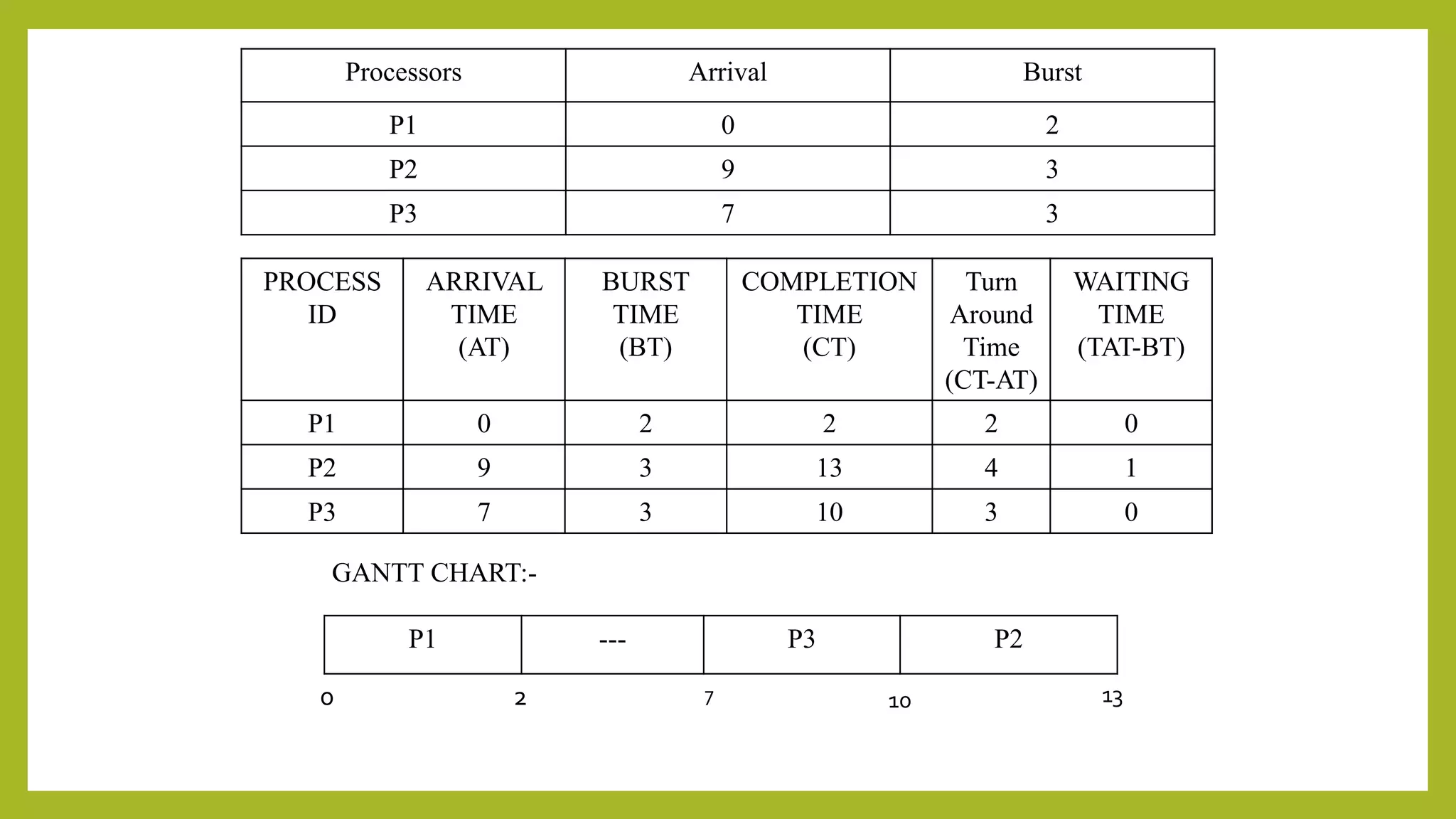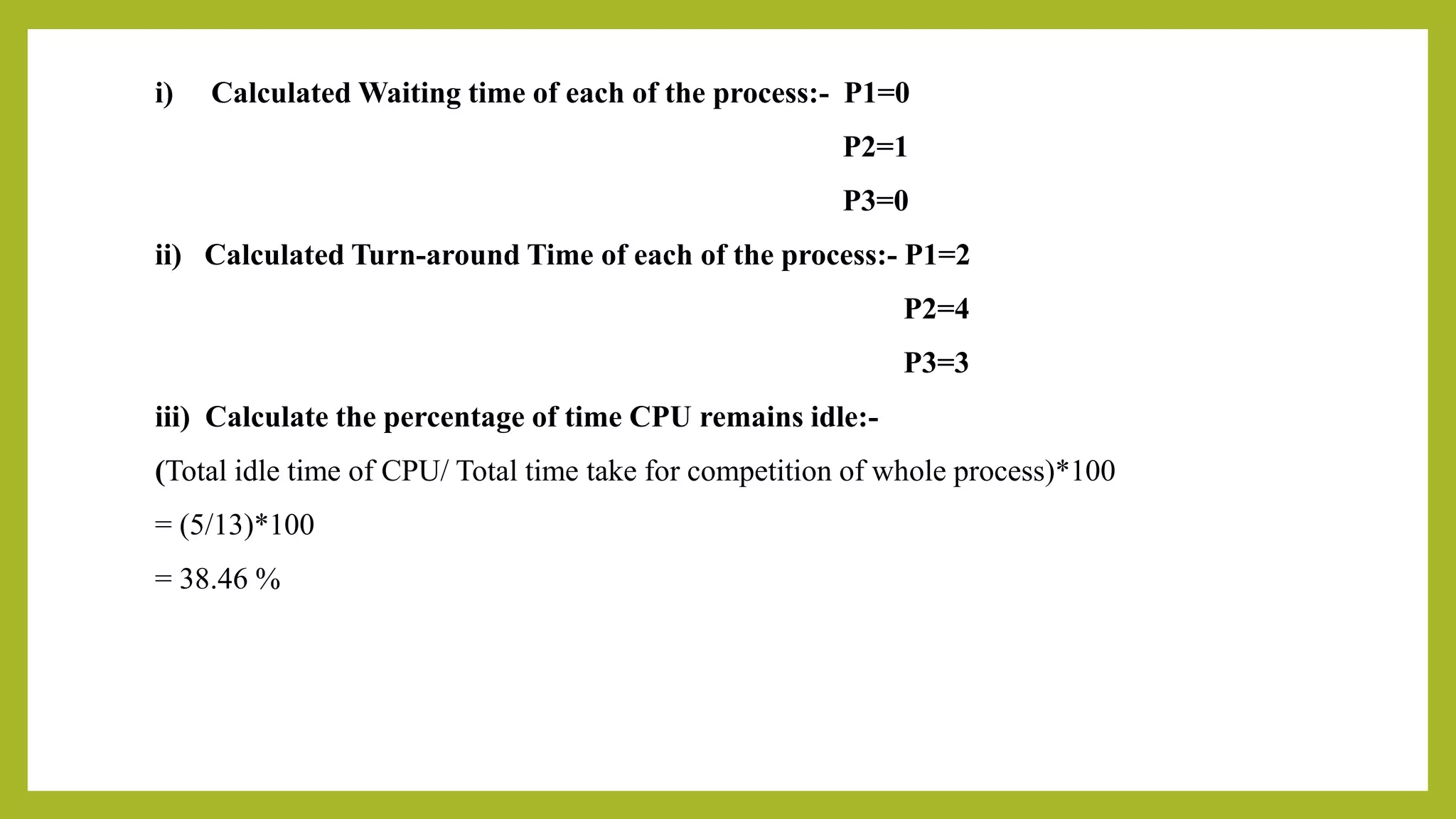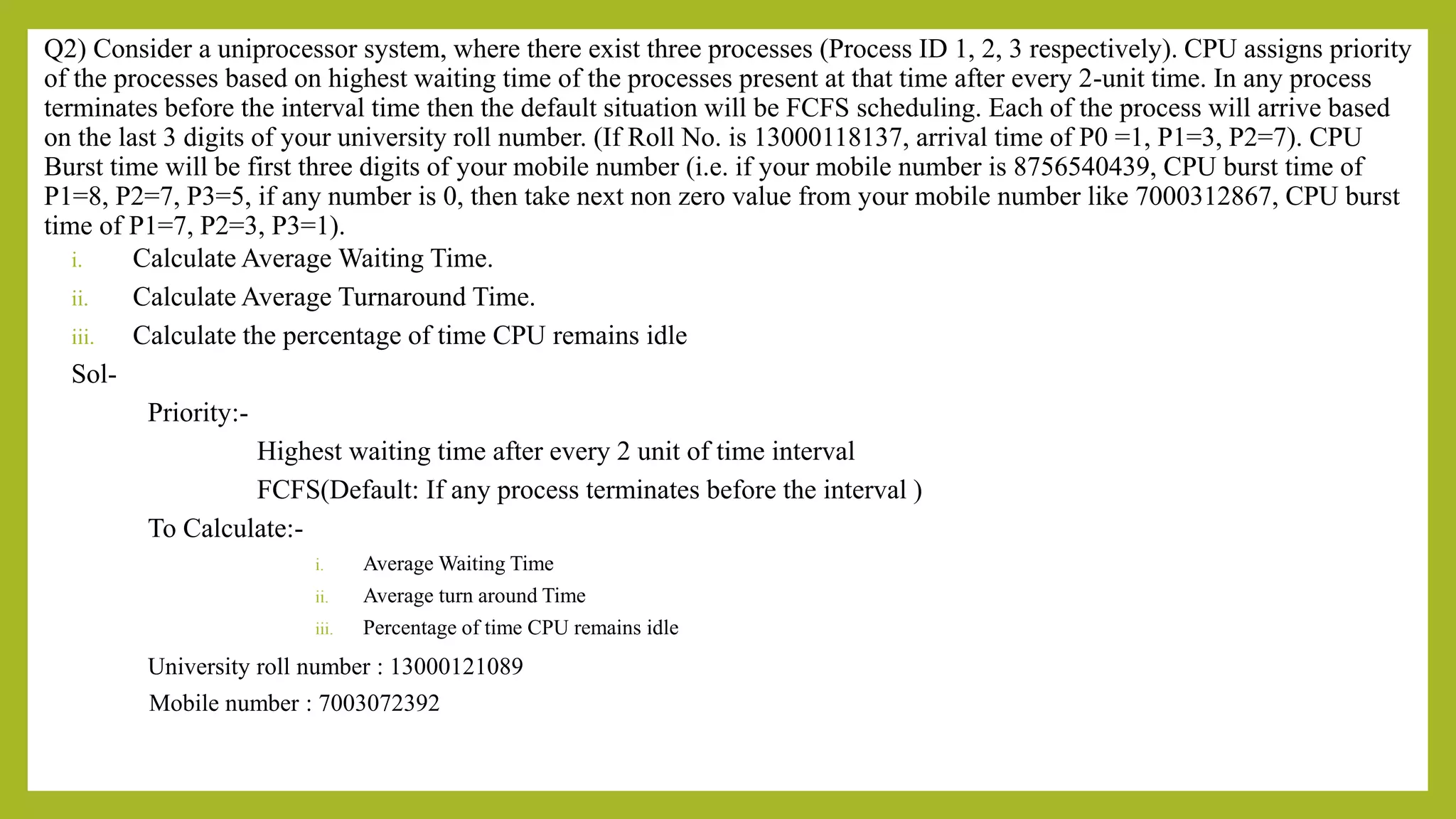Sarupya Datta Sub discusses two CPU scheduling algorithms: Shortest Remaining Time First (SRTF) and First Come First Serve (FCFS). SRTF is a preemptive algorithm that selects the process with the shortest remaining burst time to execute next, aiming to minimize average waiting and turnaround times. FCFS is a non-preemptive algorithm that executes processes in the order of their arrival, without considering process length or priority. Sarupya provides examples calculating waiting times, turnaround times, and CPU idle time for sample processes under each scheduling algorithm. They conclude that scheduling algorithms aim to maximize throughput by determining the next process to receive CPU time.











